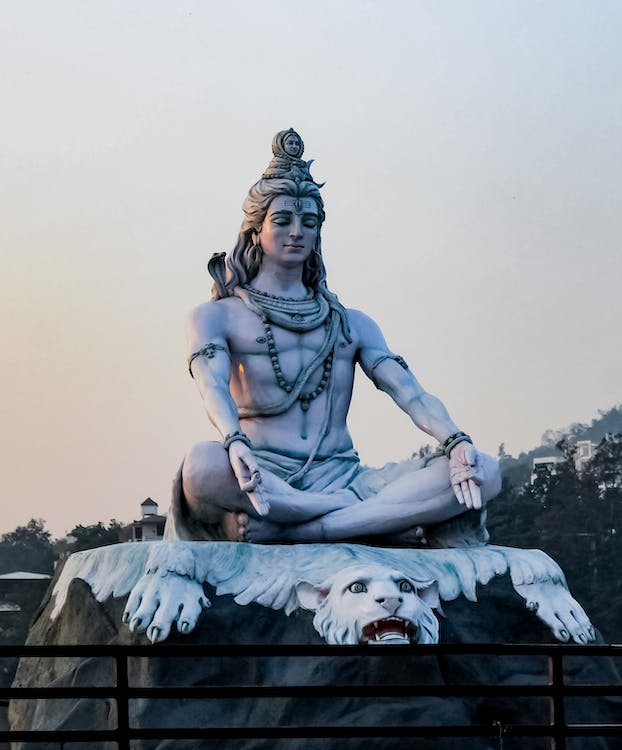দিগমণ্ডলদিগম্বৰী
দিগম্বৰ (Assamese) [ Roman: di.gom.bor]
fm: দিগম্বৰী
Contributed by: Anjali Sonowal on 2008-12-08
English: au naturel, bare, naked, nude,
Assamese: অনম্বৰ, অনাচ্ছাদিত, অনাবৃত, আৱৰণহীন, উদং, উদং-মুদং, উলংগট, উলঙ্গ, উলঙ্গট, দিগম্বৰ, দিগ্বাস, নগ্ন, নঙঠা, নাঙঠ, নিকপতি, নিকৰ্পটী, নিৰাভৰণ, নিৰাৱৰণ, বিধৰী, বিবসন, বিৱস্ত্ৰold , বেমটৰkm , লেংটা, লেঙেটা,
Bodo: खोबै, जि गानै, लंथङ, लांदां, लान्थं,
Mising: pitpag, pitsu,
Khasi: ba lyngkhuit,
Meeteilon: feijom thokpa, fishetaba,
Bishnupriya Manipuri: লেংটা,
Karbi: dalanghur, langta, reng, reng angse, rengang,
Nagamese: lengta,
Dimasa: langkao, langta,
Tai: কুন্ পুট্, পুঞ,
Nepali: अनाबृत, अन्मबर, दिगम्बर, नाँगो, निक्रपटी, बिबस्त्र, बिवसन,
Deori: ইঁ ইচা কিৰি, ইঁ ইচা লায়াবা, ইং ইচা কিৰি, ইন ইচা লায়াবা, হিগাংনা-দুমা
Contributed by: Probodh Borah (প্ৰবোধ বৰা) on 2011-01-23
 English: Gangadhar, Shiva, Siva,
English: Gangadhar, Shiva, Siva,
Assamese: অতিদেৱ, অদ্ৰিনাথ, অদ্ৰীশ, অনংগাৰি, অনলাক্ষ, অম্বিকানাথ, অসমনেত্ৰ, আদিনাথ, আশুতোষ, ইন্দু মৌলী, ইন্দুভূষণ, ইন্দুভৃত্য, ইন্দুমৌলি, ইন্দুশেখৰ, ইন্দুশেষৰ, ইন্দ্ৰনাথ, ইন্দ্ৰেশ্বৰ, ঈশান, উগ্ৰদেৱ, উগ্ৰেশ, উমাকান্ত, উমানন্দ, উমানাথ, উমাপতি, উমেশ, উৰগভূষণ, একনাথ, কন্দুকেশ্বৰ, কপালমালী, কপৰ্দী, কলাধৰ, কল্মাৰকন্ঠ, কাপালী, কামাখ্যানাথ, কালভক্ষ, কালযোগী, কালাৰি, কাশীনাথ, কাশীপতি, কাশীশ, কাশীশ্বৰ, কৃকৰ, কৃতজ্বৰ, কৃত্তিৱাস, কৃশাংগ, কেদাৰ, কেদাৰনাথ, কৈলাসনাথ, কৈলাসপতি, ক্ৰতুধ্বংসী, খগাভিৰাম, খটাংগধাৰী, খটাংগধৰ, খণ্ডপৰশু, গংগাধৰ, গিৰিজাকান্ত, গিৰিশ, গিৰীশ, গুড়াকেশ, গুৰাকেশ, গৌৰীনাথ, গৌৰীশ্বৰ, চণ্ডাপতি, চন্দ্ৰচূড়, চন্দ্ৰভূষণ, চন্দ্ৰমৌলি, চন্দ্ৰমৌলী, চন্দ্ৰশেখৰ, চন্দ্ৰিক, চন্দ্ৰিল, চেকিতান, চৰ্মবসন, জটাধাৰী, জটাধৰ্, জটীয়া, জলমূৰ্তি, জল্পেশ্বৰ, জ্বালাবক্ৰ, জ্বালী, টংকটিক, ডম্বৰুধৰ, তট, তাৰকনাথ, তাৰকেশ্বৰ, ত্ৰিনাথ, ত্ৰিনেত্ৰ, ত্ৰিনয়ন, ত্ৰিপুৰঘ্ন, ত্ৰিপুৰাৰি, ত্ৰিলোচন, ত্ৰিশূলধাৰী, ত্ৰিশূলী, ত্ৰ্যক্ষ, ত্ৰ্যম্বক, ত্ৰয়ীতনু, দাক্ষায়ণী পতি, দিকুকৰ, দিক্কৰ, দিগম্বৰ, দুৰ্গাধীশ, দুৰ্গাপতি, দুৰ্গেশ, দুৰ্গেশ্বৰ, দেৱপ্ৰিয়, দেৱাদিদেৱ, দেৱেন্দ্ৰনাথ, দেৱেশ, দ্ৰাপ, ধূৰ্জটি, ধূৰ্জতি, ধূৰ্জ্জটি, ধূৰ্জ্জুটি, নকুল, নটশেখৰ, নটেশ্বৰ, নটৰাজ, নন্দ্যেশ্বৰ, নীলকন্ঠ, নীলগ্ৰীৱ, পঞ্চানন, পশুপতি, পিনাকপাণি, পিনাকী, পুদগল, পুৰঞ্জয়, পুৰভিদ, পুৰমথন, পুৰুহৰ, প্ৰমথনাথ, প্ৰমথেশ, ফণীধৰ, ফণীভূষণ, বলিয়া-গোসাঁই, বহিৰেতা, বহ্নিৰেতাঃ, বাণেশ্বৰ, বিভূতিভূষণ, বিল্বেশ্বৰ, বিশ্বনাথ, বিশ্বেশ্বৰ, বিৰূপাক্ষ, বীৰেশ্বৰ, বৃষধ্বজ, বৃষভবাহন, বৈদ্যনাথ, ব্যোমকেশ, ভগনেত্ৰ, ভগনেত্ৰ-হাৰী, ভুৱনেশ্বৰ, ভূতনাথ, ভূতভাৱন, ভূদেৱ, ভৃংগেশ্বৰ, ভৈৰৱ, ভোলানাথ, ভৱানীকান্ত, ভৱানীপতি, ভৱেশ, মহাকাল, মহাদেৱ, মহানট, মহেশ, মহেশ্বৰ, মাৰজিৎ, মৃগাংকশেখৰ, মৃগাঙ্কমৌলি, মৃগাঙ্কশেখৰ, মৃত্যুঞ্জয়, যোগীন্দ্ৰ, যোগেশ, যোগেশ্বৰ, শংকৰ, শতঘ্ন, শম্ভু, শম্ভুনাথ, শশীভূষণ, শিৱ, শূলপাণি, শূলী, শেখৰ, শৈলজানন্দ, শ্ৰীকন্ঠ, শৰ্ব, সতীন্দ্ৰ, সতীপতি, সতীশ, সদাশিৱ, সিদ্ধদেৱ, সোমনাথ, সোমেশ্বৰ, স্মৰজিৎ, হিংগুলেশ্বৰ, হৰ, ৰংগনাথ, ৰামেশ্বৰ, ৰুদ্ৰ,
Bodo: सिब,
Karbi: hibo,
Dimasa: shibrai, shibarai,
Hindi: हर,
Nepali: नीलकन्ठ, महादेव,
Tiwa: Mahadeo
Contributed by: Tapan K Sarma(তপন কুমাৰ শৰ্মা) on 2015-07-22
দিগম্বৰ (Assamese) [ Roman: di.gom.bor]
fm: দিগম্বৰী
Contributed by: Anjali Sonowal on 2008-12-08
1. (Proper Adj.-Common) without clothes or covering কাপোৰ বা আৱৰণ নথকা
Assamese: অনম্বৰ, অনাচ্ছাদিত, অনাবৃত, আৱৰণহীন, উদং, উদং-মুদং, উলংগট, উলঙ্গ, উলঙ্গট, দিগম্বৰ, দিগ্বাস, নগ্ন, নঙঠা, নাঙঠ, নিকপতি, নিকৰ্পটী, নিৰাভৰণ, নিৰাৱৰণ, বিধৰী, বিবসন, বিৱস্ত্ৰold , বেমটৰkm , লেংটা, লেঙেটা,
Bodo: खोबै, जि गानै, लंथङ, लांदां, लान्थं,
Mising: pitpag, pitsu,
Khasi: ba lyngkhuit,
Meeteilon: feijom thokpa, fishetaba,
Bishnupriya Manipuri: লেংটা,
Karbi: dalanghur, langta, reng, reng angse, rengang,
Nagamese: lengta,
Dimasa: langkao, langta,
Tai: কুন্ পুট্, পুঞ,
Nepali: अनाबृत, अन्मबर, दिगम्बर, नाँगो, निक्रपटी, बिबस्त्र, बिवसन,
Deori: ইঁ ইচা কিৰি, ইঁ ইচা লায়াবা, ইং ইচা কিৰি, ইন ইচা লায়াবা, হিগাংনা-দুমা
Contributed by: Probodh Borah (প্ৰবোধ বৰা) on 2011-01-23
2. Hinduism(Proper Noun-Masculine) One of the Trimurti, the three primary aspects of the divine in Hinduism. Other of the Trimurti are Brahma and Vishnu. In the Trimurti system, Brahma is the creator, Vishnu is the maintainer or preserver, and Shiva is the destroyer or transformer.
Shiva is usually worshipped as the Shiva linga. In images, he is generally represented as immersed in deep meditation or dancing the Tandava upon the demon of ignorance in his manifestation of Nataraja, the lord of the dance.

Assamese: অতিদেৱ, অদ্ৰিনাথ, অদ্ৰীশ, অনংগাৰি, অনলাক্ষ, অম্বিকানাথ, অসমনেত্ৰ, আদিনাথ, আশুতোষ, ইন্দু মৌলী, ইন্দুভূষণ, ইন্দুভৃত্য, ইন্দুমৌলি, ইন্দুশেখৰ, ইন্দুশেষৰ, ইন্দ্ৰনাথ, ইন্দ্ৰেশ্বৰ, ঈশান, উগ্ৰদেৱ, উগ্ৰেশ, উমাকান্ত, উমানন্দ, উমানাথ, উমাপতি, উমেশ, উৰগভূষণ, একনাথ, কন্দুকেশ্বৰ, কপালমালী, কপৰ্দী, কলাধৰ, কল্মাৰকন্ঠ, কাপালী, কামাখ্যানাথ, কালভক্ষ, কালযোগী, কালাৰি, কাশীনাথ, কাশীপতি, কাশীশ, কাশীশ্বৰ, কৃকৰ, কৃতজ্বৰ, কৃত্তিৱাস, কৃশাংগ, কেদাৰ, কেদাৰনাথ, কৈলাসনাথ, কৈলাসপতি, ক্ৰতুধ্বংসী, খগাভিৰাম, খটাংগধাৰী, খটাংগধৰ, খণ্ডপৰশু, গংগাধৰ, গিৰিজাকান্ত, গিৰিশ, গিৰীশ, গুড়াকেশ, গুৰাকেশ, গৌৰীনাথ, গৌৰীশ্বৰ, চণ্ডাপতি, চন্দ্ৰচূড়, চন্দ্ৰভূষণ, চন্দ্ৰমৌলি, চন্দ্ৰমৌলী, চন্দ্ৰশেখৰ, চন্দ্ৰিক, চন্দ্ৰিল, চেকিতান, চৰ্মবসন, জটাধাৰী, জটাধৰ্, জটীয়া, জলমূৰ্তি, জল্পেশ্বৰ, জ্বালাবক্ৰ, জ্বালী, টংকটিক, ডম্বৰুধৰ, তট, তাৰকনাথ, তাৰকেশ্বৰ, ত্ৰিনাথ, ত্ৰিনেত্ৰ, ত্ৰিনয়ন, ত্ৰিপুৰঘ্ন, ত্ৰিপুৰাৰি, ত্ৰিলোচন, ত্ৰিশূলধাৰী, ত্ৰিশূলী, ত্ৰ্যক্ষ, ত্ৰ্যম্বক, ত্ৰয়ীতনু, দাক্ষায়ণী পতি, দিকুকৰ, দিক্কৰ, দিগম্বৰ, দুৰ্গাধীশ, দুৰ্গাপতি, দুৰ্গেশ, দুৰ্গেশ্বৰ, দেৱপ্ৰিয়, দেৱাদিদেৱ, দেৱেন্দ্ৰনাথ, দেৱেশ, দ্ৰাপ, ধূৰ্জটি, ধূৰ্জতি, ধূৰ্জ্জটি, ধূৰ্জ্জুটি, নকুল, নটশেখৰ, নটেশ্বৰ, নটৰাজ, নন্দ্যেশ্বৰ, নীলকন্ঠ, নীলগ্ৰীৱ, পঞ্চানন, পশুপতি, পিনাকপাণি, পিনাকী, পুদগল, পুৰঞ্জয়, পুৰভিদ, পুৰমথন, পুৰুহৰ, প্ৰমথনাথ, প্ৰমথেশ, ফণীধৰ, ফণীভূষণ, বলিয়া-গোসাঁই, বহিৰেতা, বহ্নিৰেতাঃ, বাণেশ্বৰ, বিভূতিভূষণ, বিল্বেশ্বৰ, বিশ্বনাথ, বিশ্বেশ্বৰ, বিৰূপাক্ষ, বীৰেশ্বৰ, বৃষধ্বজ, বৃষভবাহন, বৈদ্যনাথ, ব্যোমকেশ, ভগনেত্ৰ, ভগনেত্ৰ-হাৰী, ভুৱনেশ্বৰ, ভূতনাথ, ভূতভাৱন, ভূদেৱ, ভৃংগেশ্বৰ, ভৈৰৱ, ভোলানাথ, ভৱানীকান্ত, ভৱানীপতি, ভৱেশ, মহাকাল, মহাদেৱ, মহানট, মহেশ, মহেশ্বৰ, মাৰজিৎ, মৃগাংকশেখৰ, মৃগাঙ্কমৌলি, মৃগাঙ্কশেখৰ, মৃত্যুঞ্জয়, যোগীন্দ্ৰ, যোগেশ, যোগেশ্বৰ, শংকৰ, শতঘ্ন, শম্ভু, শম্ভুনাথ, শশীভূষণ, শিৱ, শূলপাণি, শূলী, শেখৰ, শৈলজানন্দ, শ্ৰীকন্ঠ, শৰ্ব, সতীন্দ্ৰ, সতীপতি, সতীশ, সদাশিৱ, সিদ্ধদেৱ, সোমনাথ, সোমেশ্বৰ, স্মৰজিৎ, হিংগুলেশ্বৰ, হৰ, ৰংগনাথ, ৰামেশ্বৰ, ৰুদ্ৰ,
Bodo: सिब,
Karbi: hibo,
Dimasa: shibrai, shibarai,
Hindi: हर,
Nepali: नीलकन्ठ, महादेव,
Tiwa: Mahadeo
Contributed by: Tapan K Sarma(তপন কুমাৰ শৰ্মা) on 2015-07-22
3. Religious-Mythological(Proper Noun-Neuter) One of the two main sects of Jainism. Vetambara is a term describing its ascetics practice of wearing white clothes, which sets it apart from the Digambara whose ascetic practitioners go naked. Svatambaras, unlike Digambaras, do not believe that ascetics must practice nudity. জৈনসকলৰ এটা ভাগ৷ শ্বেতাম্বৰ(বগা কাপোৰ পিন্ধোতা) জৈনসকলৰ এটা ভাগ৷ আনটো ভাগ দিগম্বৰ (নাঙঠ)৷
